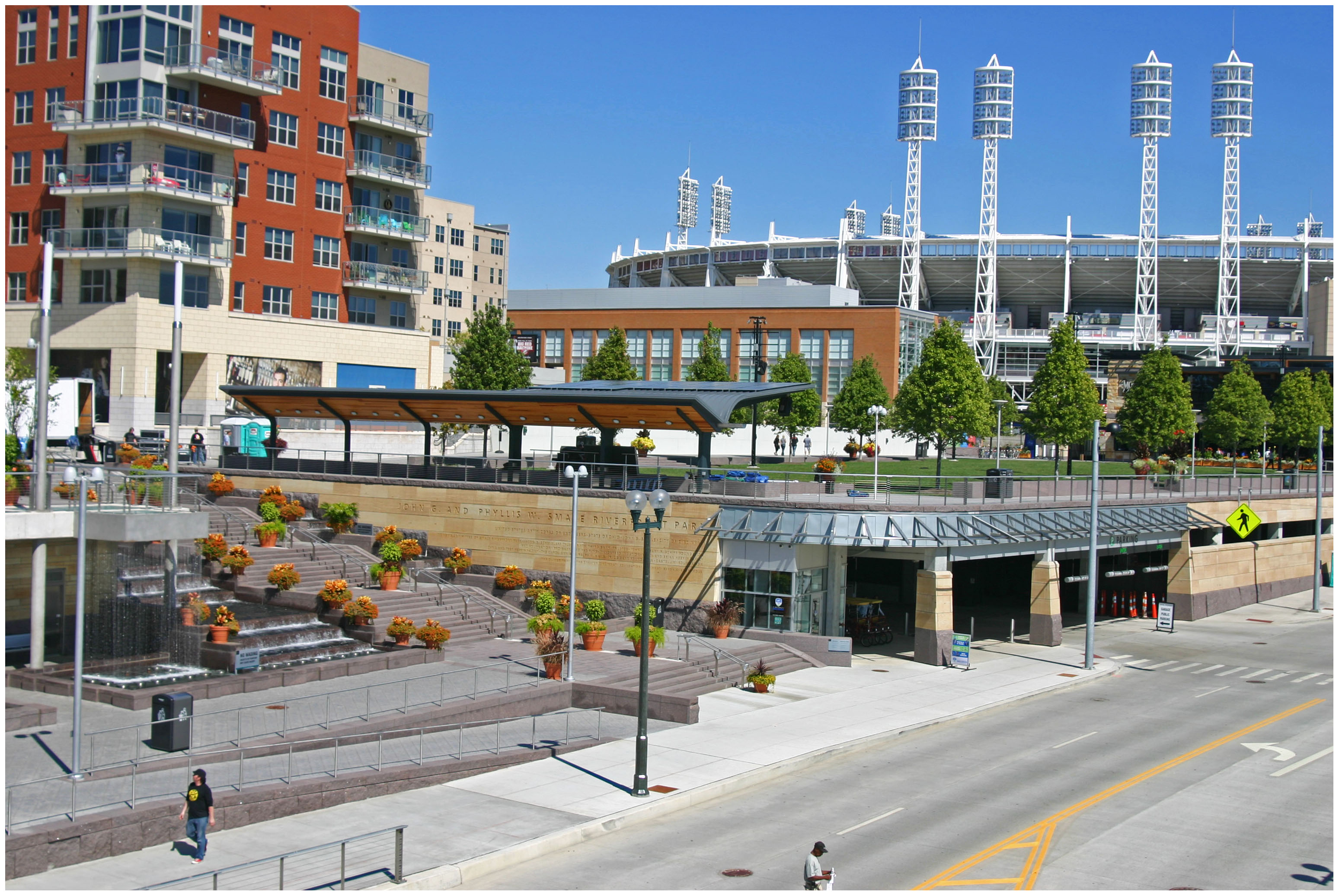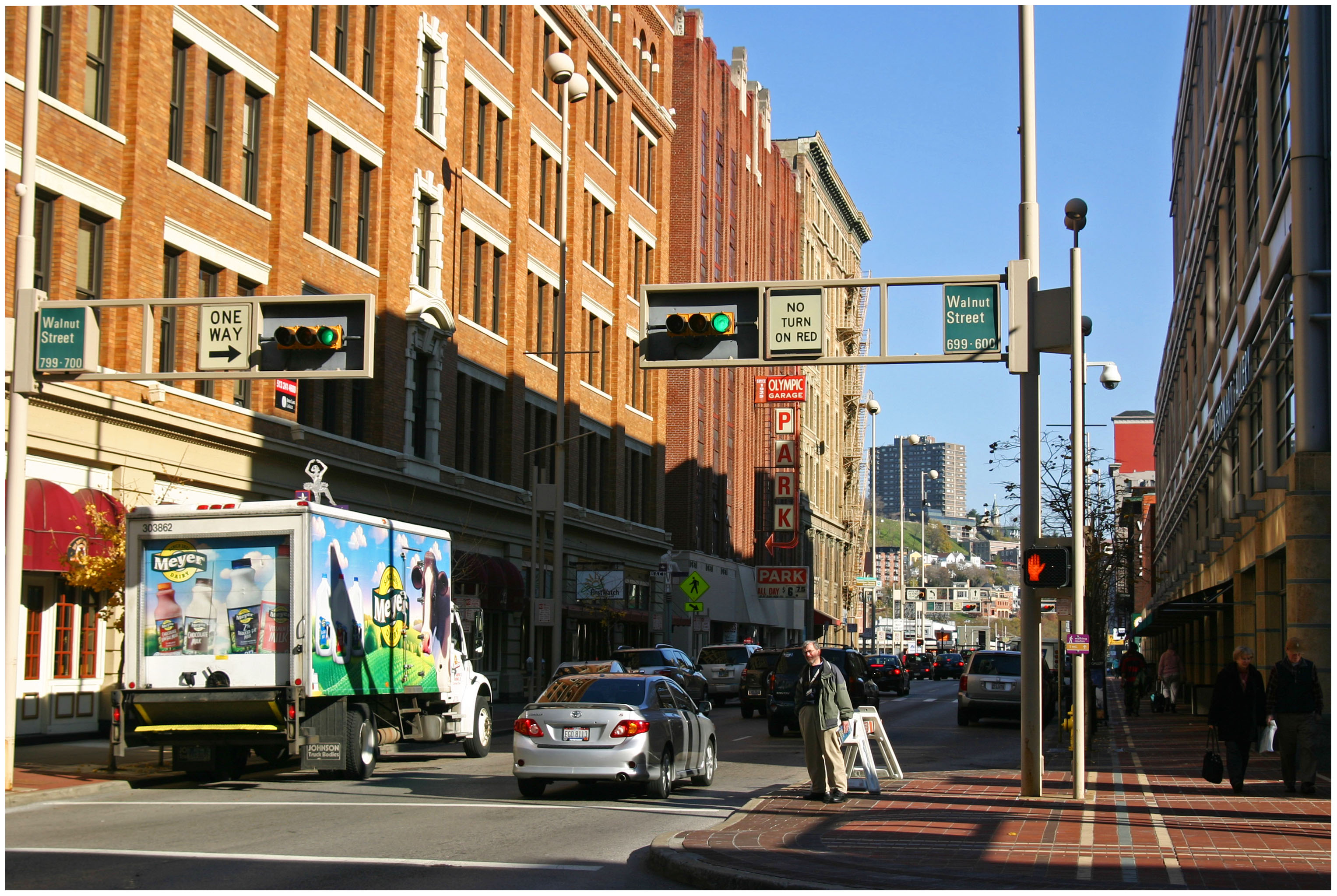The City of Cincinnati will be working to improve its pedestrian crossings over the coming years in order to align with recently updated state and federal standards.
The Manual of Uniform Traffic Control Devices (MUTCD) was updated in late 2009 and includes new best practices for pedestrian crosswalk designs.
The old standard accepted the typical parallel lines seen throughout most of the city today, but the new MUTCD calls for what traffic engineers call “continental” crosswalk markings, which feature two-foot-wide yellow or white stripes. The new MUTCD also calls for the implementation of countdown pedestrian signals where the pedestrian change interval is greater than seven seconds.

The intersection of Seventh and Walnut Streets downtown represents both the old standard for crosswalk markings and signals. Photograph by Randy Simes for UrbanCincy.
According to Cincinnati’s Department of Transportation & Engineering (DOTE), continental crosswalk markings have not yet been phased in throughout the city, but that as intersections are improved the City is working to upgrade both the pedestrian signals and crosswalk.
“The parallel markings were, at one time, considered “the standard” for crosswalk markings,” Michael Moore, Director of Cincinnati’s DOTE, told UrbanCincy. “However, with the update of the MUTCD in late 2009, best practices established the continental makings as a preferred design.”
The new continental markings are seen as a safety improvement for both pedestrians and drivers as they make crosswalks more visible, thus reducing collisions between automobile drivers and pedestrians.
The new markings, however, do pose some installation and maintenance issues for local governments.

The mid-block crossing, connecting Smale Riverfront Park with The Banks, on Mehring Way features a continental crossing design. Photograph by Randy Simes for UrbanCincy.
“We place most of our markings with thermoplastic because of its durability and reflectivity; however when wet, it can be slippery,” Moore explained. “And because the continental markings require more paint or thermoplastic, they cost more to install, and more to maintain since more of the stripe is in-line with the traffic flow.”
In order to help save taxpayer dollars, Moore says that the City studies where exactly to place the markings so that they avoid the most common path of wheel travel.
Crosswalk signals with countdown timers, meanwhile, have become more popular throughout the United States since cities like Washington D.C. began testing them years ago. Locally, both Covington, KY and Newport, KY have had these timers in use in their downtowns for years.
In addition to these new countdown timers at crosswalks, the time signals allow for pedestrians to cross the street may also soon be changing. Cincinnati officials say they will be adjusting pedestrian signals to accommodate the region’s aging population.
“Where the previous timing assumed pedestrians travel approximately 4 feet per second, the new manual reduces that to 3.5 feet per second,” noted Moore. “It doesn’t sound like a lot, think about the number of large intersections we have.”
There is no set timing on these upgrades, but Cincinnati officials say that more and more crossing signals will be changed out over the coming years, and that crosswalk markings will change as intersection upgrades are performed. Cincinnatians can already see the new continental markings in place a non-signalized, mid-block crossings.
